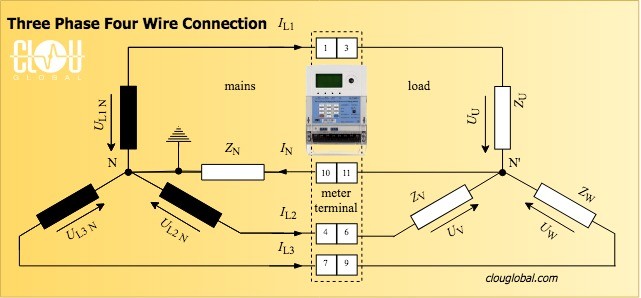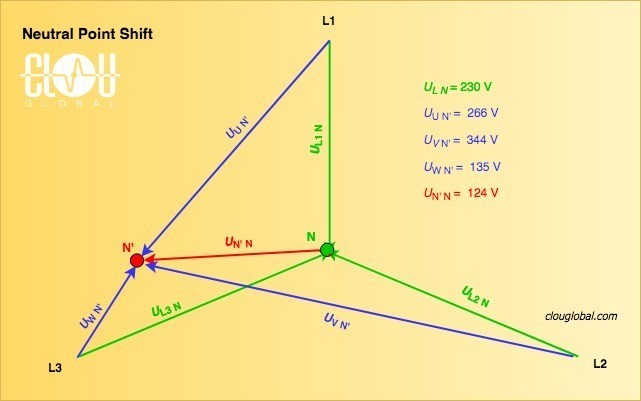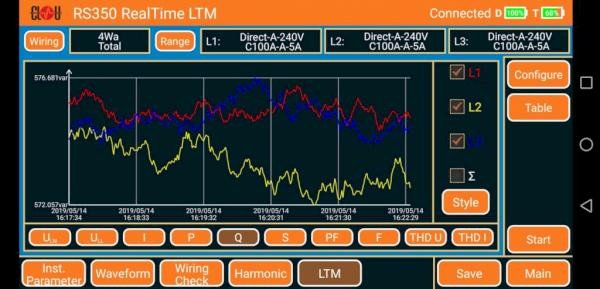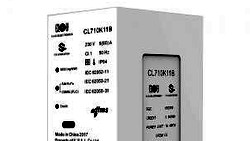![]() This article is for interested utility engineers. Don't make experiments at home. This will lead to tamper and can damage home appliances. Opening of the terminal cover is allowed by authorized utility staff only.
This article is for interested utility engineers. Don't make experiments at home. This will lead to tamper and can damage home appliances. Opening of the terminal cover is allowed by authorized utility staff only.
If you work with energy meters, always maintain the general safety rules.
Since three-phase 3 wire meters don't need a neutral, the following applies for three-phase 4 wire meters only.
The Problem
The energy meter shows for a longer period (> 30 s) a reverse current, though there is no any power generation on load side.
A possible reason can be a high resistance or an interruption in the neutral wiring. This can come from:
- poor connection
- too small wire cross-section
- wrong or poor earthing
The Reason
Now it gets pretty much theoretical. We look at a wiring diagram first.

For sure, you remember the formula for the currents in three-phase meters with star connection.



This is simple Ohm's law.
Calculation for balanced load
Z = ZU = ZV = ZW (all resistances are the same)




Now we see, what we all have expected. If we have balanced or symmetric load, the sum current is zero.
Calculation for unbalanced Load
ZU ≠ ZV ≠ ZW (different resistances per phase)
If the impedance in Neutral (ZN) is zero, we can calculate the current in Neutral (IN) like this:

If ZN ≠ 0, we have an impedance in Neutral. In this case the current in Neutral is:

The current is particularly returned in the phases with lower load according to the Kirchhoff law. Now we have a reverse current. In case of missing neutral, the current will be distributed to the phases by 100 %.
Neutral Point Shift
In addition, we have a Neutral point shift coming from the potential difference between the Neutral at transformer (N) and the Neutral at load (N').
We set up our known equitations first.

Then we resolve the above equitation by UN'N.

Now, that we have done the Math, we look at the effect.

Green: mains side
Blue: load side
Red: shift
We see that the real problem of high resistance in Neutral is the shift of the Neutral point. This can lead to extreme phase-neutral voltage differences.
How to tackle the problem?
Check the wiring at the meter terminal. Be sure about your electrical power supply system. Is the Neutral build from earthing only? In most cases, I saw temporary problems during a dry season when the Earth resistance is increasing.
Use an on-site tester with advanced features like analysis of phase angles, monitor the vectorial diagram and run eventually a long time record to limit the causes of the fault.

What about the Energy Meter?
Our CLOU three-phase 4 wire energy meters have wide range power supply modules. They are powering up, even when the Neutral is missing.
Once the meter is powered up, it simply makes its job by sampling the incoming values. The advanced meters have registers for bidirectional measurement. An arrow on the meter display shows flow in reverse direction.
I saw in some tender specifications that the meter should operate normal under missing neutral conditions. So, we did extensive tests. The operation is normal, but with error variations.
There is no standard for error limits under these abnormal situations. The general findings are, that the error variations are below 1 % for missing neutral, if all three phases are present. If in addition one phase is missing and the power factor is < 0.5, the error can vary up to 3.5 % from the regular value in any direction depending on the load-point.
Still, I have to say that missing neutral is a safety risk due to high occurring voltages. It's also utility responsibility to make sure that the resistance in neutral is low. Each country has regulations, in Germany are 10 Ohm impedance allowed for Neutral earthing.
Thank you for reading and stay safe
Editor's note: This article was originally published in January 2022 and has been updated for comprehensiveness.





No coment
Thank you for saying that. I really appreciate the feedback!
THERE IS A THREE PHASE 4 WIRE SUPPLY SYSTEM TO A HOUSE HAVING UNBALANCE AS WELL AS ELECTRONIC LOAD. I NOTICED NEUTRAL CURRENT DUE TO UNBALANCE LOAD AND OVER AND ABOVE THERE IS THIRD HARMONIC CURRENT DUE TO LED LIGHT AND OTHER ELECTRONICALLY CONTROL LOAD. THIS RESULT IN NEUTRAL TO EARTH VOLTAGE NEAR TO 15 V.
CAN THIS AFFECT THE ENERGY RECORDING? AS WE ARE BILLED HIGHER EVERY MONTH.
Thank you for detailed description. Unbalanced load and harmonics are normal in the three-phase 4 wire system. Electronics energy meters are capturing the consumption including the occurring harmonics accurate. Means, your meter is in the allowed tolerance of +/- 1% (for a class 1 meter).
Your Neutral-Earth potential difference comes from poor earthing at your house or in your area and has no impact on billing.
My question was not fully answered – (Drawbacks = disadvantages not differences)
Comment if the expected life of meter will be reduced?
please review- you can email me alone
Thank you for additional comment. Since the accelerated life tests for three-phase meters are not based on single-phase connection, we don't have these data. IMHO the lifetime is the same, but without having the related tests we can't proof it.
Are there any other drawbacks of using a 3 phase meter (3P4W) to meter single phase load apart from high cost?
Can it reduce the expected life of the 3 phase meter?
There are no other differences to meter load via three-phase meters or single-phase meters. The three-phase meters support single-phase power supply. But while connecting the meter, you need to first check the meter relay status to avoid tamper, and check the working voltage range.